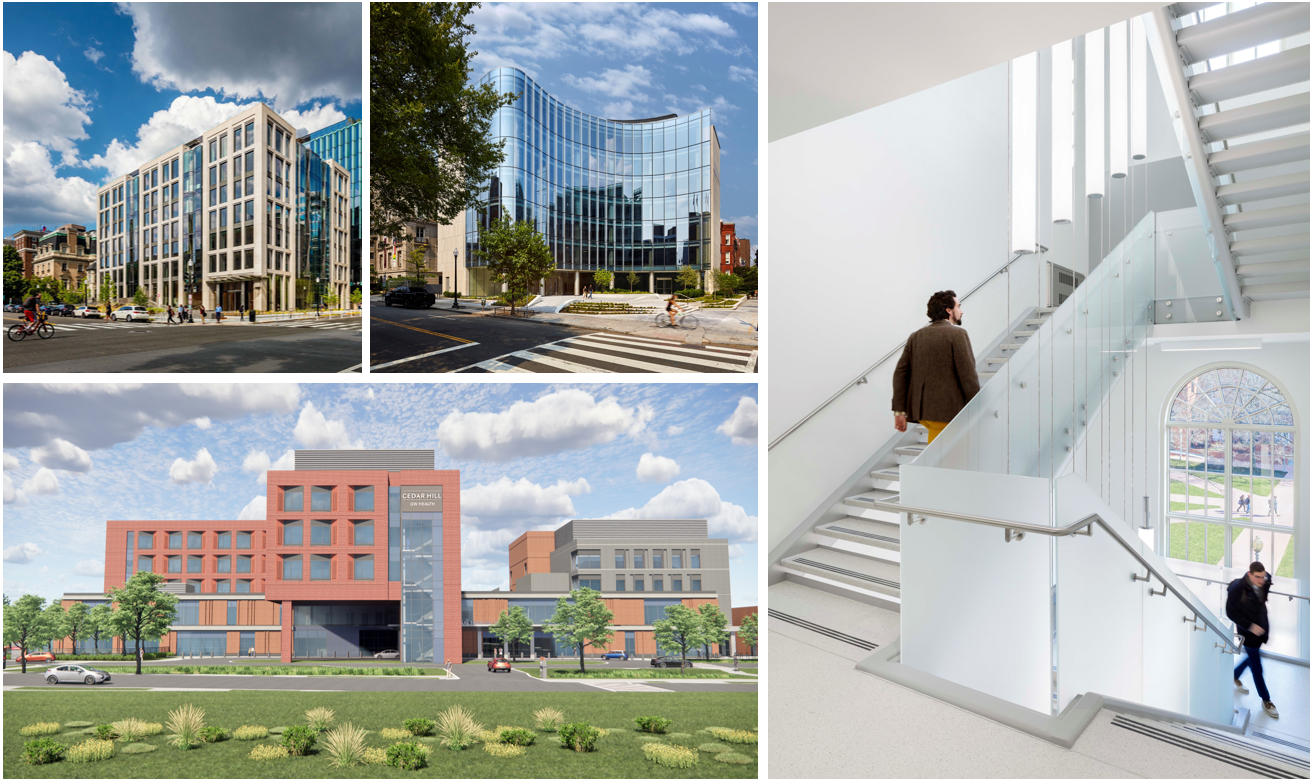
Overview:
Historic preservation is about meeting the challenges of our community today: decarbonization, equitable design, resiliency, biodiversity, placemaking; while honoring the historic fabric at building or District Scale, and enhancing the community with new construction or deep green retrofits. Presentation will include deep green retrofits of Corcoran Hall at the George Washington University Campus (Historic building), 1101 16th Street NW (Class A, LEED Platinum repositioning of 1970s brutalist office buildings in a Historic District), 1771 N Street NW (Class A, LEED Gold repositioning of 1960s office building in a Historic District) and new construction of a LEED Healthcare Silver full-service hospital in St. Elizabeth's East Campus (Historic District) that focuses on equitable design, resiliency and decarbonization while bringing urgently needed emergency healthcare services to Anacostia.
Learning Objectives:
- Understand how to get high performance results in a historic building retrofit
- Understand how to reposition properties in a historic district to achieve community goals for resiliency, equitable design, decarbonization, biodiversity while enhancing the historic fabric of the community
- Understand how to design new construction in a historic district, balancing historic dialogue with community goals for health, resiliency, equitable design, decarbonization, and biodiversity
- Understand that historic urban fabric and preservation is interdependent with design for sustainability, resiliency, decarbonization and equity
Presented by:
Anica Landreneau, Associate AIA, LEED AP BDC, WELL AP
Sustainable Design Director, HOK
Anica is HOK’s Global Sustainable Design Director, serving on the firm’s Board of Directors and Design Board. Based in Washington, D.C., Anica is appointed to the DC Green Building Advisory Council and co-chairs the Building Energy Performance Standard Task Force. Anica serves on the Green and Energy Codes Committee, supporting the district’s decarbonization code development and advancement to a zero-carbon code by 2026. Nationally, Anica serves on the USGBC LEED Steering Committee and AIA Government Advocacy Committee and is a past chair of the AIA Codes and Standards Committee.
Chloe Hiyu, AIA, LEED BDC
Senior Project Manager, HOK
Chloe Hiyu is a Senior Principal at HOK and a practicing architect for over twenty years in Washington, D.C. Chloe works closely with commercial and institutional clients on projects in the Washington Metro Area and all around the world, from the entitlement process through the occupancy of buildings. As a firm believer in the vitality of our cities, Chloe celebrates the opportunities to renew urban pockets through the building reuse and brings a sustainable approach to these projects.
Damon Sheppard, AIA, LEED BDC
Regional Leader, Science & Technology, HOK
Damon is the regional leader of Science + Technology for HOK’s Washington, D.C., studio, and a firm-wide thought leader for the design of higher education facilities. He has programmed, planned and designed more than one million square feet of space for higher education, corporate life science and institutional clients. He is co-chair of HOK’s Diversity Advisory Council, founder of the mentoring program in HOK’s D.C. studio, member of the national board of directors for the ACE Mentoring Program and past professor in the School of Architecture at Howard University.
Mitchell Collin, AIA, LEED BDC
Regional Leader, Healthcare, HOK
Based in HOK’s Washington D.C. studio, Mitch oversees healthcare projects throughout the eastern and southeastern U.S. His collaborative design approach considers functional, aesthetic, contextual, cultural and environmental influences to produce performance-driven solutions focused on providing exceptional patient care. Mitch has designed and managed health facility projects of all scales for public, private and academic organizations. In recent years he has led multidisciplinary teams in the design of major 1,000+ bed medical facilities.
